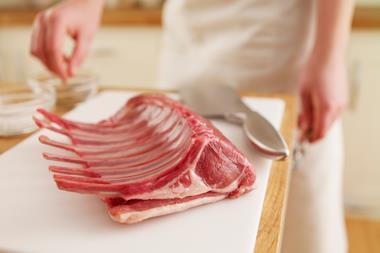Forecasts of shortage, and then a glut with plummeting prices, have been downgraded to limited disruption as the foot and mouth outbreak appeared to come under control this week. Turmoil in the British lamb market as 1.4m carcasses were due for export may prove less serious than producers initially feared due to broader EU concerns such as increased competition from New Zealand product on the Continent. Although a three-month export ban could result in an additional 25,000 tonnes of lamb for domestic markets, imports had been predicted to increase slightly during this period and NZ product could be redirected to the Continent. Beef supply prospects are also looking favourable, following the easing of livestock movement restrictions in Scotland, allowing processors such as Grampian to begin supplying retailers in England. Farmers and processors in Northern Ireland escaped the export ban and are free to trade as usual, while imposing a ban on all cattle, sheep and pig movements from Britain, as well as imports of fresh meat and unpasteurised milk. English and Welsh traders were optimistic of a green light for movement, with major slaughterers poised for action. Even limited disruption will have thrown the beef slaughtering schedule out of kilter, however, with a delay in availability of beef for extended hanging. Should a movement ban remain in force, beef supplies should last for two weeks, and lamb and pigmeat for one week. Morrisons is believed to have comfortable stocks of Australian beef available. Peter King, NFU chief advisor, livestock, said he was confident the overall market in terms of producer returns and retailer supplies could stabilise quickly. "I would not see price pressure as an issue," he said, adding PM Gordon Brown had pledged to hold big retailers accountable on maintaining fair contracts. According to Defra and MLC analysts, there would be a long delay before increased domestic supply pushed down farmgate prices.
Close menu
- Home
- Retail & Wholesale
-
Products & Suppliers
- Back to parent navigation item
- Products & Suppliers
-
Product Categories:
- Back to parent navigation item
- Product Categories:
- Alcoholic drinks
- Bakery
- Cereals & breakfast
- Cheese
- Chicken & poultry
- Chocolate
- Confectionery
- Crisps, nuts & snacks
- Dairy
- Fish
- Fresh produce
- Frozen
- Household
- Meat
- Own Label
- Sauces & condiments
- Seasonal
- Soft drinks
- Vaping
- Vegan & plant-based
- World foods
- Suppliers
- People
- Reports & Data
-
Topics A-Z
- Back to parent navigation item
- Topics A-Z
-
Popular topics:
- Back to parent navigation item
- Popular topics:
- Cost of living crisis
- Crime
- Deposit Return Schemes
- Finance
- Government & Regulation
- Health
- Inflation
- Loyalty
- Marketing
- Mergers & Acquisitions
- New Product Development
- Sourcing
- Supply chain
- Sustainability & environment
- Technology
- Ultra Processed Foods
- Vaping
- A-Z all topics
- Content by type:
- Events
- Ask iA (beta)
- Subscribe now
Sign in to comment on this article
Not logged in before? Register for FREE guest access today.
You will be able to:
- Read more stories
- Receive daily newsletters
- Comment on stories
Advert


















No comments yet